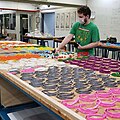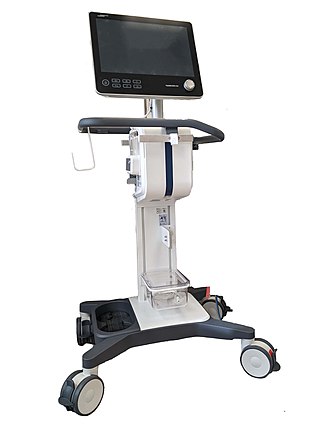
A ventilator is a type of breathing apparatus, a class of medical technology that provides mechanical ventilation by moving breathable air into and out of the lungs, to deliver breaths to a patient who is physically unable to breathe, or breathing insufficiently. Ventilators may be computerized microprocessor-controlled machines, but patients can also be ventilated with a simple, hand-operated bag valve mask. Ventilators are chiefly used in intensive-care medicine, home care, and emergency medicine and in anesthesiology.
The Strategic National Stockpile (SNS), originally called the National Pharmaceutical Stockpile (NPS), is the United States' national repository of antibiotics, vaccines, chemical antidotes, antitoxins, and other critical medical supplies. Its website states:
"The Strategic National Stockpile's role is to supplement state and local supplies during public health emergencies. Many states have products stockpiled, as well. The supplies, medicines, and devices for life-saving care contained in the stockpile can be used as a short-term stopgap buffer when the immediate supply of adequate amounts of these materials may not be immediately available."

The maker culture is a contemporary subculture representing a technology-based extension of DIY culture that intersects with hardware-oriented parts of hacker culture and revels in the creation of new devices as well as tinkering with existing ones. The maker culture in general supports open-source hardware. Typical interests enjoyed by the maker culture include engineering-oriented pursuits such as electronics, robotics, 3-D printing, and the use of computer numeric control tools, as well as more traditional activities such as metalworking, woodworking, and, mainly, its predecessor, traditional arts and crafts.

The COVID-19 pandemic in California began earlier than in some other parts of the United States. Ten of the first 20 confirmed COVID-19 infections in the United States were detected in California, and the first infection was confirmed on January 26, 2020. All of the early confirmed cases were persons who had recently travelled to China, as testing was restricted to this group, but there were some other people infected by that point. A state of emergency was declared in the state on March 4, 2020. A mandatory statewide stay-at-home order was issued on March 19, 2020; it was ended on January 25, 2021. On April 6, 2021, the state announced plans to fully reopen the economy by June 15, 2021.
The COVID-19 pandemic in Armenia was a part of the worldwide pandemic of coronavirus disease 2019 caused by severe acute respiratory syndrome coronavirus 2. The virus was confirmed to have reached Armenia on 1 March 2020 when its first case was reported. It has spread to all of the regions (marz) of Armenia and has caused 4,400 deaths.

Flattening the curve was a public health strategy to slow down the spread of the SARS-CoV-2 virus during the early stages of the COVID-19 pandemic. The curve being flattened is the epidemic curve, a visual representation of the number of infected people needing health care over time. During an epidemic, a health care system can break down when the number of people infected exceeds the capability of the health care system's ability to take care of them. Flattening the curve means slowing the spread of the epidemic so that the peak number of people requiring care at a time is reduced, and the health care system does not exceed its capacity. Flattening the curve relies on mitigation techniques such as hand washing, use of face masks and social distancing.

Shortages related to the COVID-19 pandemic are pandemic-related disruptions to goods production and distribution, insufficient inventories, and disruptions to workplaces caused by infections and public policy.

Operation Broadshare is the code name for the British military operation to address the COVID-19 pandemic overseas, primarily in the British Overseas Territories (BOTs) and British overseas military bases. The operation runs in parallel to a similar military operation in the United Kingdom, named Operation Rescript.
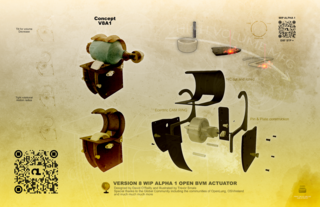
An open-source ventilator is a disaster-situation ventilator made using a freely licensed (open-source) design, and ideally, freely available components and parts. Designs, components, and parts may be anywhere from completely reverse-engineered or completely new creations, components may be adaptations of various inexpensive existing products, and special hard-to-find and/or expensive parts may be 3D-printed instead of purchased. As of early 2020, the levels of documentation and testing of open-source ventilators was well below scientific and medical-grade standards.
Planning and preparing for pandemics has happened in countries and international organizations. The World Health Organization writes recommendations and guidelines, though there is no sustained mechanism to review countries' preparedness for epidemics and their rapid response abilities. National action depends on national governments. In 2005–2006, before the 2009 swine flu pandemic and during the decade following it, the governments in the United States, France, UK, and others managed strategic health equipment stocks, but they often reduced stocks after the 2009 pandemic in order to reduce costs.

Megan L. Ranney is a practicing American emergency physician currently serving as the Dean of the Yale School of Public Health. Previously, Ranney served as the Deputy Dean of the Brown University School of Public Health, was Warren Alpert Endowed Professor in the Department of Emergency Medicine at Rhode Island Hospital and the Alpert Medical School of Brown University. Ranney was the founding Director of the Brown-Lifespan Center for Digital Health.
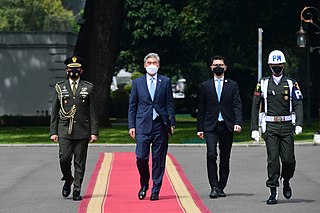
During the COVID-19 pandemic, face masks or coverings, including N95, FFP2, surgical, and cloth masks, have been employed as public and personal health control measures against the spread of SARS-CoV-2, the virus that causes COVID-19.

The COVID-19 pandemic has impacted hospitals around the world. Many hospitals have scaled back or postponed non-emergency care. This has medical consequences for the people served by the hospitals, and it has financial consequences for the hospitals. Health and social systems across the globe are struggling to cope. The situation is especially challenging in humanitarian, fragile and low-income country contexts, where health and social systems are already weak. Health facilities in many places are closing or limiting services. Services to provide sexual and reproductive health care risk being sidelined, which will lead to higher maternal mortality and morbidity. The pandemic also resulted in the imposition of COVID-19 vaccine mandates in places such as California and New York for all public workers, including hospital staff.

Due to its severity, the COVID-19 pandemic has caused countries to send aid, as part of the international responses and management regarding the pandemic. Types of materials aided includes masks, medical supplies, personal protective equipment, money, and test kits. It started with aid to China as the virus spreads primarily there, and then internationally as it spreads globally. The destination of the aid ranges from hospitals, COVID-19 healthcare workers, research on the vaccine, to societies vulnerable. People donating includes the government of said country, notable people, organizations and institutions, charities, as well as regular people.

Part of managing an infectious disease outbreak is trying to delay and decrease the epidemic peak, known as flattening the epidemic curve. This decreases the risk of health services being overwhelmed and provides more time for vaccines and treatments to be developed. Non-pharmaceutical interventions that may manage the outbreak include personal preventive measures such as hand hygiene, wearing face masks, and self-quarantine; community measures aimed at physical distancing such as closing schools and cancelling mass gathering events; community engagement to encourage acceptance and participation in such interventions; as well as environmental measures such surface cleaning. It has also been suggested that improving ventilation and managing exposure duration can reduce transmission.

The United States' response to the COVID-19 pandemic with consists of various measures by the medical community; the federal, state, and local governments; the military; and the private sector. The public response has been highly polarized, with partisan divides being observed and a number of concurrent protests and unrest complicating the response.
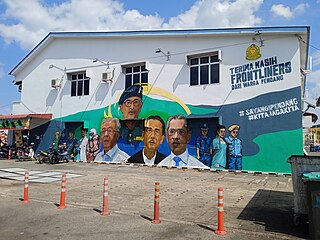
The Government of Malaysia along with various non governmental organisations (NGOs), companies, and foreign governments introduced various financial aid and relief programs in response to the economic impacts of the COVID-19 pandemic in Malaysia. In 27 March 2020, Prime Minister Muhyiddin Yassin introduced an economic stimulus package known as the Prihatin worth RM250 billion.

The United Kingdom's response to the COVID-19 pandemic consists of various measures by the healthcare community, the British and devolved governments, the military and the research sector.

Gui Cavalcanti is a robotics engineer who co-founded Open Source Medical Supplies, Artisan's Asylum, and MegaBots Inc.

